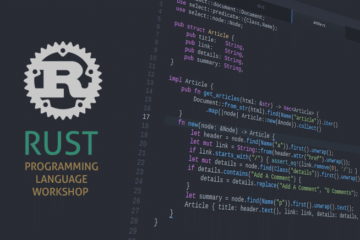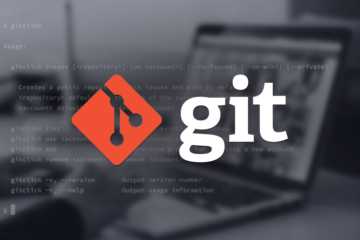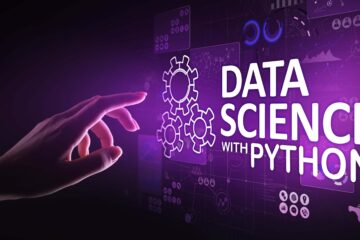Python is a powerful and versatile programming language that has gained immense popularity for its simplicity and readability. Whether you’re a complete novice or an experienced developer looking to expand your skill set, mastering Python opens up a world of possibilities in web development, data science, artificial intelligence, and more. In this guide for beginners, we’ll take you through a step-by-step journey from the basics to advanced concepts, providing examples and sample code along the way.
Getting Started with Python
- Installing Python: Visit python.org to download and install the latest version of Python for your operating system.
- Running Python: Open a terminal or command prompt and type
pythonto enter the interactive Python interpreter.
python
Python 3.11.8 (main, Feb 12 2024, 14:50:05) [GCC 13.2.1 20230801] on linux
Type “help”, “copyright”, “credits” or “license” for more information.
>>>
Python Syntax and Variables
Python’s syntax is designed to be simple and readable, making it easy for beginners to grasp.
- Indentation: Python uses indentation to define blocks of code instead of braces
{}. Consistent indentation is crucial for code readability and is enforced by the interpreter. - Comments: You can add comments to your code using the
#symbol. Comments are ignored by the interpreter and are useful for explaining code logic or leaving notes for yourself and other developers. - Case Sensitivity: Python is case-sensitive, meaning
variableandVariablewould be treated as two different variables. - Statement Termination: Unlike some other languages, Python does not require semicolons at the end of statements. However, you can use semicolons to separate multiple statements on a single line.
- Code Blocks: Python uses colons (
:) to indicate the start of code blocks such as those in if statements, for loops, while loops, and function definitions.
Variables and Data Types: In Python, variables are used to store data values. Variables do not need to be declared with any particular type and can change types dynamically.
- Variable Naming: Variable names can consist of letters (both lowercase and uppercase), digits, and underscores but cannot start with a digit. It’s good practice to use descriptive names that convey the purpose of the variable.
- Data Types: Python supports various data types, including:
- Numeric Types: Integers (
int), floating-point numbers (float), and complex numbers (complex). - Sequence Types: Lists (
list), tuples (tuple), and strings (str). - Boolean Type: Boolean values (
bool) representing True or False. - None Type: The special
Noneobject representing the absence of a value.
- Numeric Types: Integers (
- Dynamic Typing: Unlike statically typed languages, you don’t need to declare the data type of a variable explicitly in Python. The interpreter automatically determines the type based on the assigned value.
- Variable Assignment: You can assign values to variables using the assignment operator (
=). - Variable Reassignment: Variables can be reassigned to different values of different types.
- Multiple Assignment: You can assign multiple variables simultaneously using a single line of code.f
Example:
# Hello, World!
print("Hello, World!")
# Variables and Data Types
name = "Alice"
age = 30
height = 5.7
is_student = True
Control Flow and Loops
Control flow refers to the order in which statements are executed in a program. Python provides various control flow statements to alter the flow of execution based on certain conditions.
- Conditional Statements (if, elif, else): Conditional statements allow you to execute different blocks of code based on specified conditions. The
ifstatement checks a condition, and if it’s true, executes a block of code. Optionally, you can includeelif(short for “else if”) statements to check additional conditions. Theelsestatement is used to execute a block of code when the preceding conditions are false.
Example:
x = 10
if x > 0:
print("Positive")
elif x < 0:
print("Negative")
else:
print("Zero")
Loops are used to repeatedly execute a block of code until a certain condition is met. Python supports two types of loops: for and while.
- For Loop: The
forloop iterates over a sequence (such as a list or range) and executes the block of code for each element in the sequence.
Example:
for i in range(5):
print(i)
- While Loop: The
whileloop repeatedly executes a block of code as long as a specified condition is true.
Example:
i = 0
while i < 5:
print(i)
i += 1
- Loop Control Statements: Python provides loop control statements to change the behavior of loops.
break: Terminates the loop prematurely.continue: Skips the rest of the code inside the loop for the current iteration and continues with the next iteration.pass: Acts as a placeholder, allowing you to write empty loops or conditional statements without causing syntax errors.
Understanding control flow and loops is essential for writing flexible and efficient Python programs. They allow you to execute code conditionally and repetitively, enabling you to solve a wide range of problems effectively. Practice using control flow and loops with different scenarios to master their usage in Python.
Functions and Modules
Functions are blocks of reusable code that perform a specific task. They help in organizing code, making it more modular, readable, and easier to maintain. In Python, functions are defined using the def keyword, followed by the function name, parentheses containing optional parameters, and a colon. The body of the function is indented and contains the code to be executed.
- Defining Functions: Functions are defined using the
defkeyword followed by the function name and parentheses containing optional parameters. You can define parameters to pass data into the function.
Example:
def greet(name):
print("Hello, " + name + "!")
- Calling Functions: After defining a function, you can call it by using its name followed by parentheses. If the function accepts parameters, you need to provide values for them within the parentheses.
Example:
greet("Alice")
- Return Statement: Functions can optionally return a value using the
returnstatement. This allows the function to send data back to the caller.
Example:
def add(x, y):
return x + y
result = add(3, 5)
print(result) # Output: 8
Modules are Python files that contain reusable code, including functions, classes, and variables. Python’s modular design encourages code reuse and simplifies complex programs by organizing code into separate files. You can create your own modules or use existing ones from the Python Standard Library or third-party packages.
- Creating Modules: To create a module, simply write your Python code in a
.pyfile. The filename becomes the module name, and you can import it in other Python scripts to access its contents.
Example (module named my_module.py):
def greet(name):
print("Hello, " + name + "!")
- Importing Modules: You can import modules into your Python script using the
importstatement followed by the module name. After importing, you can access the functions, classes, and variables defined in the module using dot notation.
Example:
import my_module
my_module.greet("Alice")
- Module Aliases: You can create aliases for imported modules to simplify their usage in your code.
Example:
import my_module as mm
mm.greet("Bob")
- Standard Library: Python comes with a rich collection of modules known as the Standard Library, which provides a wide range of functionality for various tasks such as file I/O, networking, and data processing.
Using functions and modules allows you to break down complex problems into smaller, manageable components, making your code more organized, reusable, and maintainable. Embrace modular programming practices to write cleaner and more efficient Python code.
Data Structures
Data structures are fundamental components of any programming language, providing a way to organize and store data efficiently. Python offers a rich set of built-in data structures that cater to various needs, from simple lists to complex dictionaries and sets.
- Lists: Lists are ordered collections of items, where each item is separated by a comma and enclosed within square brackets
[]. Lists can contain elements of different data types and can be modified after creation.
Example:
fruits = ["apple", "banana", "cherry"]
- Tuples: Tuples are similar to lists but are immutable, meaning their elements cannot be modified after creation. They are defined using parentheses
().
Example:
point = (10, 20)
- Dictionaries: Dictionaries are collections of key-value pairs, where each key is associated with a value. They are enclosed within curly braces
{}and are useful for representing structured data.
Example:
person = {"name": "Alice", "age": 30, "city": "New York"}
- Sets: Sets are unordered collections of unique elements. They are defined using curly braces
{}and can be created from lists or other iterable objects using theset()function.
Example:
unique_numbers = {1, 2, 3, 4, 5}
- Strings: Strings are sequences of characters enclosed within single (
') or double (") quotes. They are immutable, meaning their contents cannot be changed after creation.
Example:
message = "Hello, World!"
- Arrays: Arrays are similar to lists but can only contain elements of the same data type. They are provided by the
arraymodule in Python’s Standard Library.
Example:
import array
numbers = array.array('i', [1, 2, 3, 4, 5]) # 'i' indicates integer type
- Custom Data Structures: In addition to built-in data structures, you can create custom data structures using classes in Python. This allows you to define your own data types and encapsulate related data and operations.
Python’s versatile collection of data structures provides developers with powerful tools for handling and manipulating data in various ways. Understanding when and how to use each data structure is essential for writing efficient and maintainable code. Experiment with different data structures to gain a deeper understanding of their capabilities and limitations.
File Handling
File handling in Python allows you to perform various operations on files, such as reading from and writing to them. Python provides built-in functions and methods for working with files, making it easy to interact with the file system.
- Opening Files: You can open files using the
open()function, specifying the file path and mode (read, write, append, etc.). Theopen()function returns a file object that you can use to perform operations on the file.
Example – Opening a File for Reading:
with open("example.txt", "r") as file:
content = file.read()
print(content)
- Reading from Files: Once a file is opened, you can read its contents using methods like
read(),readline(), orreadlines(). Theread()method reads the entire contents of the file as a string, whilereadline()reads a single line, andreadlines()reads all lines into a list.
Example – Reading Lines from a File:
with open("example.txt", "r") as file:
for line in file:
print(line.strip()) # Strip removes leading/trailing whitespace
- Writing to Files: To write data to a file, open it in write or append mode and use methods like
write()orwritelines()to write data to the file. Be cautious when writing, as it will overwrite existing content in write mode.
Example – Writing to a File:
with open("output.txt", "w") as file:
file.write("Hello, World!\n")
file.write("This is a new line.\n")
- Closing Files: It’s important to close files after you’re done working with them to release system resources. Python’s
withstatement ensures that files are automatically closed when the block of code exits, even if an error occurs. - Exception Handling: When working with files, it’s essential to handle potential errors, such as file not found or permission denied. You can use try-except blocks to gracefully handle exceptions that may arise during file operations.
File handling is a fundamental aspect of programming, allowing you to interact with external data sources and persist information between program runs. Understanding file handling in Python empowers you to build applications that read, write, and manipulate data efficiently. Experiment with different file operations and error-handling strategies to become proficient in file handling.
Object-Oriented Programming (OOP)
Object-Oriented Programming is a programming paradigm that organizes code into objects, which represent real-world entities and have properties (attributes) and behaviors (methods). Python fully supports OOP principles, allowing you to create classes and objects, encapsulate data and functionality, and build complex software systems.
- Classes and Objects: In Python, a class is a blueprint for creating objects, while an object is an instance of a class. Classes define the structure and behavior of objects, including attributes (data) and methods (functions).
- Defining Classes: Classes are defined using the
classkeyword followed by the class name and a colon. Inside the class definition, you can define attributes and methods.
Example – Defining a Class:
class Person:
def __init__(self, name, age):
self.name = name
self.age = age
def greet(self):
print("Hello, my name is " + self.name)
- Creating Objects: Once a class is defined, you can create objects (instances) of that class using the class name followed by parentheses. Each object is independent and has its own set of attributes and methods.
Example – Creating Objects:
person1 = Person("Alice", 30)
person2 = Person("Bob", 25)
- Attributes and Methods: Attributes are variables that hold data associated with an object, while methods are functions that operate on the object’s data. You can access attributes and call methods using dot notation.
Example – Accessing Attributes and Calling Methods:
print(person1.name) # Output: Alice
person2.greet() # Output: Hello, my name is Bob
- Inheritance: Inheritance is a feature of OOP that allows a class (subclass) to inherit attributes and methods from another class (superclass). It enables code reuse and promotes modularity and extensibility.
Example – Inheritance:
class Student(Person):
def __init__(self, name, age, student_id):
super().__init__(name, age)
self.student_id = student_id
def study(self):
print(self.name + " is studying.")
- Encapsulation: Encapsulation is the bundling of data (attributes) and methods that operate on the data into a single unit (class). It hides the internal state of objects and restricts direct access to data, promoting data integrity and security.
Example – Encapsulation:
class BankAccount:
def __init__(self, account_number, balance):
self._account_number = account_number
self._balance = balance
def deposit(self, amount):
self._balance += amount
def withdraw(self, amount):
if self._balance >= amount:
self._balance -= amount
else:
print("Insufficient funds")
- Polymorphism: Polymorphism allows objects of different classes to be treated as objects of a common superclass. It enables flexibility and extensibility in code by allowing different objects to respond to the same method call in different ways.
Example – Polymorphism:
class Animal:
def make_sound(self):
pass
class Dog(Animal):
def make_sound(self):
print("Woof!")
class Cat(Animal):
def make_sound(self):
print("Meow!")
Object-Oriented Programming is a powerful paradigm for designing and organizing code in a modular and reusable manner. By understanding OOP principles and practicing with classes, objects, inheritance, and other concepts, you can write more maintainable, scalable, and efficient Python code. Experiment with building and extending classes to gain proficiency in OOP.
Advanced Topics
These advanced topics will further enhance your Python skills and enable you to write more efficient and elegant code. Experiment with them in your projects to unlock the full potential of Python programming.
- Exception Handling: Python provides a robust mechanism for handling exceptions, allowing you to gracefully handle errors in your code.
Example:
try:
result = 10 / 0
except ZeroDivisionError:
print("Error: Division by zero")
- List Comprehensions: A concise way to create lists in Python using a single line of code.
Example:
squares = [x**2 for x in range(10)]
- Decorators: Functions that modify the behavior of other functions or methods.
Example:
def decorator(func):
def wrapper():
print("Before function call")
func()
print("After function call")
return wrapper
@decorator
def greet():
print("Hello, World!")
greet()
- Generators: Functions that can be paused and resumed, allowing you to iterate over a sequence of items lazily.
Example:
def countdown(n):
while n > 0:
yield n
n -= 1
for i in countdown(5):
print(i)
Conclusion
Congratulations! You’ve completed the journey from a Python novice to a proficient programmer. This guide has equipped you with the fundamental concepts and practical examples to build upon. Keep exploring Python’s vast ecosystem, experiment with projects, and never stop learning. Python’s simplicity and versatility make it an invaluable tool for developers across various domains. Happy coding!



0 Comments